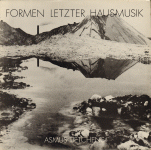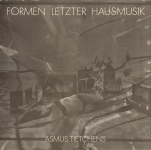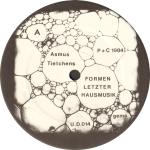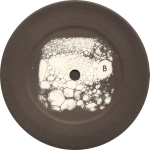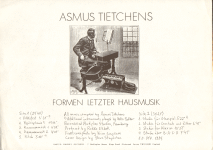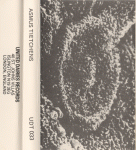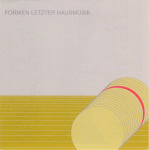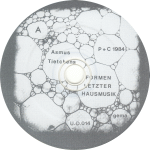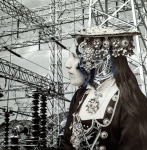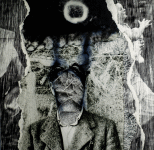- Volksfest* (5:31)
- Hydrophonie 1 (11:06)
- Kammermusik 1 (6:02)
- Kammermusik 2 (4:01)
- Hitch* (3:00)
- Studie für Glasspiel* (5:22)
- Studie für Cembalo und Zither (6:41)
- Studie für Klavier (10:37)
- Studie über B-A-C-H (7:41)
* Additional instruments played by Okko Bekker
Recorded at Audioplex Studios, Hamburg
Produced by Rokko Ekbek
Front cover photo by Kim Suprane
Cover Design by Steven Stapleton
- Volksfest
- Hydrophonie 1
- Kammermusik 1
- Kammermusik 2
- Hitch
- Studie für Glasspiel
- Studie für Cembalo und Zither
- Studie für Klavier
- Studie über B-A-C-H
- Volksfest
- Hydrophonie 1
- Kammermusik 1
- Kammermusik 2
- Hitch
- Studie für Glasspiel
- Studie für Cembalo und Zither
- Studie für Klavier
- Studie über B-A-C-H
- Volksfest (5:18)
- Hydrophonie 1 (11:13)
- Kammermusik 1 (6:10)
- Kammermusik 2 (4:08)
- Hitch (3:08)
- Studie für Glasspiel (5:23)
- Studie für Cembalo und Zither (6:59)
- Studie für Klavier (10:45)
- Studie über B-A-C-H (7:50)
- Hitch 2 (2:03)
- Vox Humana (3:04)
- Speeds And Clusters (6:31)
(translated from the German)
In 1983 I finally decided to set the course for a new musical direction. On one hand it became clear to me that my ability to create rythmic and harmonic pop-music was somewhat limited, and that I began to repeat myself and even worse than that to become more and more redundant. On the other hand my interest in the music which I diligently created until the mid 1970's was renewed. Actually it was fairly easy to follow this path again as the so called 'industrial movement' had already build the basis for a new and positive perception of noise as a main structure in music at that time. In spring 1983 I was visited in Hamburg by David Elliot - publisher of both the Neumusik fanzine and the tape label Yorkhouse Records - who suggested that I should send a demo tape feat. tracks recorded in the late 1960's and early 1970's to the british United Dairies label. No sooner said than done. The demo featured tracks 3,4,5,6, and 7 all of them pure electro-acoustic pieces, which were created without electric sound sources. United Dairies replied to me expressing interest in releasing an LP and asked me to record some new/additional material(1,2,8,9); three of these new pieces are also pure electro-acoustic while track 9 was realised on the Fairlight CMI - the first playable digital music computer apart from the Synclavier. United Dairies was happy with the results and decided to release the complete selection of pieces with a total playing time of 60 minutes as an LP in 1984. It's worthwhile to point out that the excellent quality of the pressing met the standard of a classical music pressing and that this shows how much care and money was put into the production of all United Dairies releases. It was only some years later that I learned that they actually worked with a pressing plant specializing in the production of classical music. I don't consider Formen letzter Hausmusik as an industrial album, as it wasn't my intention to produce industrial music at all, nor was/is United Dairies an industrial label. But because of the great variety of styles and the impossibility to categorize all the individual creations of these new Noise-musicians, everything (incl. United Dairies with his whole range of artists) which wasn't New Wave, Indie-Rock or Punk was labeled Industrial because there simply was no better description yet. The term 'Difficult Music' wasn't really accepted because it was too blurred. But why have a quarrel about the emperor's beard ? For me Formen letzter Hausmusik was the result of the search for an aesthetic target after a long period which was characterized by several mistakes and confusions. I'm still following this aesthetic path until today, except for occasional escapades, even though the musical roughness of the 1980's gradually transformed to a kind of crystaline view far away from human beings.
Asmus Tietchens 2005
Editorial notes:
Tracks 3,4,5 and 7 were originally recorded in mono but were later transfered by analogue to stereo for the Lp release in 1984. I decided against changing these pieces to stereo digitally for the CD as I wanted them to stay true to the sound picture of the complete LP 21 years ago. The three bonus tracks 10,11 and 12 were also recorded in mono but I had to change them to stereo digitally as the machines for doing an analogue stereo version are no longer at my disposal. Divergent from the original LP version track 6 can be now heard with the accidental ending caused by a cough drop. The LP cover actually featured two front sides. One which was designed by myself using a photograph by Kim Suprare and the other which shows a collage by Steven Stapleton. This compromise was necessary because all the covers of the U.D. releases were designed by Steven Stapleton himself, but I also insisted that my own visual ideas should be allowed for inclusion. The original insert of the LP is a combination of Steven Stapleton's design and my hand written notes taken from a letter including the credits for the tracks. The labels were solely designed by Steven Stapleton.
hand-made sleeve by Steven Stapleton
Signed and numbered
Personal thankyou to purchasers in forthcoming "The Formless Irregular" book
- Volksfest* (5:31)
- Hydrophonie 1 (11:06)
- Kammermusik 1 (6:02)
- Kammermusik 2 (4:01)
- Hitch* (3:00)
- Studie für Glasspiel* (5:22)
- Studie für Cembalo und Zither (6:41)
- Studie für Klavier (10:37)
- Studie über B-A-C-H (7:41)
